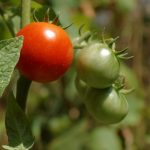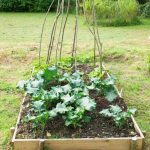Gardening at high altitudes presents a unique set of challenges and limitations for vegetable enthusiasts. The harsher climatic conditions, including cooler temperatures, shorter growing seasons, and increased exposure to wind and sunlight, can make it difficult to cultivate a thriving garden.
However, with the right knowledge and techniques, high altitude gardening can also offer numerous benefits. In this article, we will explore the specific challenges faced by gardeners in high altitude areas and delve into the advantages of growing vegetables in these regions.
Understanding the unique conditions of high altitude gardening is crucial for success. As gardeners work against shorter growing seasons and colder temperatures, they must adapt their strategies for planting, nurturing, and harvesting vegetables. Additionally, they must contend with limited access to water resources at higher elevations. Despite these challenges, there are several reasons why many gardeners choose to embrace high altitude gardening.
One of the main benefits of growing vegetables in high altitude areas is that these locations often have fewer pests and diseases compared to lower elevations. The cooler temperatures can deter common garden pests while minimizing the risk of certain plant illnesses.
Moreover, the cooler climate allows for greater success in cultivating crops that prefer cooler temperatures, such as leafy greens and root vegetables. High altitude gardens also tend to have excellent air quality and receive more intense sunlight exposure due to thinner atmospheres.
In this article, we will delve into various aspects of successful high altitude vegetable gardening. From selecting the right vegetables for these climates to addressing soil preparation techniques and strategies for extending the growing season amidst frost and cold temperatures – we will provide valuable insights into how you can create a thriving high altitude vegetable garden.
By exploring the challenges faced by gardeners at higher elevations alongside their determined solutions and inspiring success stories, this article aims to equip you with all you need to know about embarking on your own journey of high altitude gardening.
Selecting the Perfect Vegetables for High Altitude Gardening
High altitude gardening presents unique challenges due to the extreme conditions and limitations faced by gardeners at higher elevations. However, with careful selection and planning, it is possible to grow a wide variety of vegetables that thrive in these environments. When choosing vegetables for high altitude gardening, it is important to consider their ability to withstand cold temperatures, shorter growing seasons, and intense sunlight exposure.
Certain vegetables are particularly well-suited for high altitude gardens. These include cold-hardy varieties such as kale, Swiss chard, spinach, and arugula. Root vegetables like carrots, beets, and potatoes also tend to do well in cooler climates. Additionally, brassicas like broccoli and cauliflower can tolerate chilly temperatures.
When selecting vegetables for high altitude gardening, it is essential to choose the right varieties and species that have been bred specifically for cold tolerance and shorter growing seasons. Look for seeds or plants labeled as suitable for high elevations or cold climates. These varieties have adapted traits that enable them to grow successfully in such challenging conditions.
To further increase the chances of success in high altitude gardening, consider starting seeds indoors or using season extension techniques such as hoop houses or cloches to protect plants from extreme weather conditions. This will allow you to get an early start on the growing season and maximize your harvest.
In summary, selecting the perfect vegetables for high altitude gardening requires careful consideration of their ability to withstand cold temperatures and shorter growing seasons. Cold-hardy greens and root vegetables are excellent choices for these environments. It is also important to choose varieties that have been specifically bred for high elevation conditions. By selecting the right vegetables and utilizing appropriate planting techniques, gardeners can enjoy a bountiful harvest even at higher altitudes.
Preparing the Ground
When it comes to high altitude gardening, the ground preparation plays a crucial role in ensuring the success of your vegetable garden. The unique conditions at higher elevations present specific challenges that must be addressed through proper soil preparation and fertilization techniques.
One of the most important factors to consider in high altitude gardening is soil composition. Many high altitude areas have rocky or clay soils, which can be challenging for vegetable growth. It is essential to amend the soil with organic matter such as compost or well-rotted manure to improve its structure and drainage capabilities. Additionally, introducing perlite or vermiculite can help create a more porous soil that retains moisture while allowing proper oxygen flow to the roots.
Fertilization is another key aspect of preparing the ground for high altitude gardens. Due to the shorter growing season and cooler temperatures, vegetables at higher elevations may require additional nutrients to thrive. Conduct a soil test in early spring before planting your vegetables to determine any nutrient deficiencies.
Based on the results, choose a balanced organic fertilizer that provides essential macronutrients like nitrogen, phosphorus, and potassium. It’s important not to over-fertilize as this can damage plant roots and inhibit growth. Instead, follow a regular feeding schedule according to the specific needs of each vegetable variety you are cultivating.
By taking these steps in preparing your ground properly with suitable soil composition and effective fertilization techniques, you will provide an environment conducive to healthy plant growth in your high altitude vegetable garden. Next, we will explore how to tackle one of the biggest challenges faced by high altitude gardeners – frost and cold temperatures – enabling you to extend your growing season even further.
Tackling Frost and Cold
High altitude gardening comes with its own set of challenges, especially when it comes to frost and cold temperatures. The shorter growing season at higher altitudes can limit the types of vegetables that can be grown successfully. However, with the right strategies in place, it is possible to extend the growing season and maximize vegetable production.
Frost is one of the biggest threats to high altitude gardens. It can damage or kill tender plants, making it crucial to protect them during colder periods. One effective strategy is to use protective coverings such as row covers or cloches.
These can help create a microclimate around the plants, providing insulation and keeping them warm during frosty nights. Another technique is to plant cold-hardy varieties that are more resistant to frost. These varieties have been bred to withstand lower temperatures and will have a better chance of surviving colder conditions.
In addition to protecting plants from frost, high altitude gardeners can also employ techniques such as using raised beds and using cold frames or greenhouses. Raised beds allow for better drainage and soil warming, which can help prevent root rot and improve plant health. Cold frames or greenhouses provide additional heat retention and protection from extreme cold, allowing for an extended growing season.
Here are some practical tips for extending the growing season in high altitude gardens:
- Start seeds indoors: By starting your seeds indoors a few weeks before the last expected frost date, you can get a head start on the growing season.
- Use mulch: Applying a layer of mulch around plants can help insulate the soil, keeping it warmer for longer.
- Employ season-extending structures: Consider using row covers, cloches, cold frames, or greenhouses to shield plants from frost and maintain higher temperatures.
- Monitor weather conditions: Keep an eye on weather forecasts and be prepared to take action when frost is predicted. Covering plants with protective materials before nightfall can help protect them from cold temperatures.
By implementing these strategies and being proactive in protecting plants from frost and cold, high altitude gardeners can significantly extend their growing season and enjoy a more abundant harvest.
Watering and Irrigation Practices for High Altitude Vegetable Gardens
Growing vegetables at high altitudes presents unique challenges when it comes to watering and irrigation. The combination of thinner air, intense sunlight, and lower humidity levels can lead to faster evaporation and increased water requirements for plants. In this section, we will discuss the specific water needs of vegetables grown in high altitude gardens and explore techniques for efficient watering and irrigation.
Understanding the Water Requirements
Vegetables cultivated in high altitude gardens have higher water requirements compared to their counterparts grown in lowland areas. The cool temperatures at higher elevations slow down plant metabolism, which affects water uptake. Additionally, the dry air and intense sunlight cause water to evaporate quickly from leaves and soil surfaces.
To meet these increased water needs, it is crucial to monitor soil moisture levels regularly. High altitude gardeners should aim to keep the soil consistently moist but not overly saturated. One technique to determine if watering is needed is conducting a simple moisture test by inserting a finger into the soil up to the second knuckle. If it feels dry at that depth, it’s an indication that it’s time to irrigate.
Efficient Watering Techniques
Conserving water is essential for sustainable high altitude gardening practices. Here are some techniques that can help gardeners optimize their watering efforts:
- Drip irrigation: Drip emitters or soaker hoses deliver water directly to plant roots, minimizing evaporation losses. This method also prevents excess moisture on foliage, reducing the risk of fungal diseases.
- Mulching: Applying a layer of organic mulch around vegetable plants helps retain moisture by reducing evaporation from the soil surface. Mulch also helps regulate soil temperature, keeping roots cool during hot summer days.
- Watering schedule: It is best to schedule watering early in the morning or late in the evening when temperatures are cooler and evaporation rates are lower.
- Rainwater harvesting: Collecting rainwater in barrels or other containers allows gardeners to utilize natural water resources and reduce dependency on municipal water supplies. Rainwater is free of chemicals and has a balanced pH, making it an ideal choice for watering vegetable plants.
Irrigation Techniques
In high altitude vegetable gardens, overhead sprinklers may not be the most efficient irrigation method due to faster evaporation rates and potential damage to foliage. Instead, consider using the following irrigation techniques:
- Drip irrigation systems: As mentioned earlier, drip emitters deliver water directly to plant roots. These systems can be automated or manually operated and provide precise control over water application rates.
- Hand watering: Hand watering with a watering can or hose-end sprayer allows gardeners to target specific plants, ensuring each one receives adequate moisture without wasting water.
- Self-watering containers: For those gardening in limited space or urban settings, self-watering containers are a practical option. These containers have built-in reservoirs that supply water directly to plant roots as needed.
By understanding the unique water requirements of vegetables grown at high altitudes and implementing efficient watering and irrigation techniques, gardeners can ensure healthy plant growth while conserving water resources.
Sunlight and Shade Management in High Altitude Gardens
In high altitude gardens, sunlight and shade management play a crucial role in the success of vegetable cultivation. The unique elevation at these locations can result in intensified sunlight and harsher shading conditions compared to lower altitude regions. Therefore, understanding how to maximize sunlight exposure while mitigating potential shade issues is essential for high altitude gardeners.
To make the most of sunlight in high altitude gardens, it is important to carefully plan the layout and orientation of your vegetable beds. Positioning your garden to face south or southeast can ensure that plants receive optimal sunlight throughout the day. Additionally, avoiding tall structures or trees that may cast shadows on your plants is recommended.
Another effective strategy for maximizing sunlight exposure is using reflective surfaces strategically placed around the garden. This can include white stones, light-colored mulch, or even reflective material on raised beds or walls. These surfaces help bounce additional light onto the plants and reduce shadow areas.
While maximizing sunlight exposure is important, it is also crucial to address potential shade issues in high altitude gardens. Tall mountains or nearby structures can cast shadows that limit the amount of sunlight reaching certain areas of your garden. In such cases, selecting vegetables that tolerate partial shade or adjusting planting strategies can be beneficial.
Utilizing vertical gardening techniques such as trellises or stakes can be an effective way to grow certain vegetables in shaded areas. Plants like tomatoes, beans, peas, and cucumbers thrive when given vertical space to climb towards direct sunlight.
Pest and Disease Control in High Altitude Vegetable Gardens
High altitude vegetable gardens face unique challenges when it comes to pest and disease control. The cooler temperatures and shorter growing seasons in these areas can make it difficult for plants to thrive, leaving them more susceptible to pests and diseases. However, with the right strategies and techniques, gardeners can effectively manage pests and keep their high altitude vegetable gardens healthy.
One of the first steps in pest and disease control is identifying common issues that affect high altitude vegetable gardens. Some of the most common pests include aphids, slugs, caterpillars, and rodents. These pests can cause significant damage to the crops if left unchecked. In addition, fungal infections such as powdery mildew and blight are common diseases that can impact plant health.
To combat these issues in an organic and environmentally friendly way, there are several methods gardeners can employ. One effective technique is companion planting, which involves integrating certain plants that naturally repel pests or attract beneficial insects into the garden. For example, marigolds can deter aphids while attracting ladybugs, which feed on aphids.
Another important aspect of pest management is regular monitoring of the garden for signs of infestation or disease. By conducting routine inspections, gardeners can quickly identify any problems and take appropriate action before they escalate. This may involve physically removing pests by hand or applying organic insecticides or fungicides.
Furthermore, maintaining a healthy garden ecosystem is key to preventing infestations and diseases. This can be achieved through regular soil testing and proper nutrient management to ensure optimal plant health. Additionally, practicing good hygiene by promptly removing dead or diseased plants from the garden can help prevent the spread of pathogens.
Harvesting and Storage Tips for High Altitude Garden Vegetables
High altitude gardening presents unique challenges when it comes to harvesting and storing vegetables. The cooler temperatures and shorter growing season can affect the timing of harvest, while the absence of long-term storage facilities may require alternative methods for preserving the bounty of a high altitude garden. In this section, we will explore some key tips and techniques for successfully harvesting and storing vegetables in high altitude gardens.
The Best Time to Harvest
Knowing when to harvest your vegetables is crucial for obtaining optimal flavor, texture, and nutritional value. In high altitude gardens, where growing seasons may be shorter than at lower elevations, it is important to monitor the progress of your plants carefully. Keep an eye on the maturity dates provided on seed packets or nursery labels as a general guideline, but remember that environmental factors such as temperature fluctuations can affect growth rates. Stay observant and make adjustments accordingly.
Proper Storage Methods
Harvested vegetables need proper storage to maintain their quality and extend their shelf life. However, high altitude gardeners might not have access to traditional root cellars or cool storage areas due to physical limitations or extreme climates. In such cases, there are alternative methods that can be employed:
- Cold Frames: Constructing a cold frame outside can provide shelter from frost while creating a microclimate that extends the growing season and allows you to store certain temperature-resistant crops like root vegetables.
- Indoor Storage: Utilize indoor spaces in your high altitude location for vegetable storage using methods like canning, drying, freezing, or pickling. These preservation techniques offer longer shelf lives and allow you to enjoy your garden’s bounty year-round.
It is also essential to properly clean harvested vegetables before storage by removing any excess dirt or debris that may promote bacterial growth or rotting. Additionally, sorting out damaged or bruised produce will prevent spoilage from spreading among other items in storage.
With careful attention paid to harvest timing and appropriate storage methods, high altitude gardeners can make the most of their vegetable harvests and savor the flavors of their hard work throughout the year.
Success Stories and Inspiring Examples of High Altitude Vegetable Gardens
One of the most inspiring aspects of high altitude gardening is seeing the success and creativity of passionate gardeners who have overcome the challenges to create thriving vegetable gardens. These success stories serve as motivation for beginners and experienced gardeners alike, showing what is possible with dedication and a bit of ingenuity.
One such success story comes from Sarah Thompson, a resident of the Rocky Mountains at an elevation of 8,000 feet. Despite facing short growing seasons and intense sunlight, Sarah has transformed her backyard into a flourishing vegetable garden. She started by selecting hardy vegetables that are known to thrive at high altitudes, such as kale, carrots, and potatoes.
To extend her growing season, she constructed a hoop house using plastic sheeting and PVC pipes. This simple structure allows Sarah to protect her plants from frost and cold temperatures while still providing ample sunlight. Through trial and error, she has developed her own soil mix consisting of compost, perlite, and vermiculite that retains moisture despite the arid climate.
In addition to individual success stories like Sarah’s, there are also community efforts that showcase stunning examples of high altitude vegetable gardens. The town of Crested Butte in Colorado is an inspiring model for collective high altitude gardening.
With an elevation above 9,000 feet, residents have come together to create community gardens where they grow a wide variety of vegetables including lettuce, tomatoes, peppers, and squash. By sharing resources such as tools and knowledge about high altitude gardening techniques, these gardeners have created a supportive network that nurtures both their crops and their sense of community.
These success stories demonstrate that with determination and adaptability it is indeed possible to grow bountiful vegetable gardens at high altitudes. They serve as inspiration for others facing similar challenges in their pursuit of fresh food and sustainable living. By learning from these successes and adapting their strategies to suit their own unique conditions, gardeners can find joy and satisfaction in creating their own high altitude vegetable gardens.
Conclusion
In conclusion, high altitude gardening presents its own unique set of challenges and limitations, but the rewards are certainly worth the effort. Throughout this article, we have explored various aspects of high altitude gardening, from selecting the right vegetables to preparing the soil and managing sunlight exposure. Despite the frost, cold temperatures, and potential shade issues, gardeners at high altitudes can still create beautiful and productive vegetable gardens.
One of the key takeaways from this discussion is the importance of understanding which vegetables thrive in high altitude environments. By choosing varieties that are well-suited to these conditions, gardeners can ensure greater success in their endeavors. Additionally, proper soil preparation and effective fertilization techniques go a long way in optimizing vegetable growth.
While frost and cold temperatures may pose challenges, there are strategies to extend the growing season and protect plants. By implementing protective measures such as covering crops with row covers or utilizing hoop houses, gardeners can continue harvesting fresh vegetables for a longer period.
Furthermore, managing watering and irrigation practices appropriately is crucial in preventing water loss and ensuring that vegetables receive adequate moisture without being overwatered. By paying attention to the unique water requirements of vegetables grown at high altitudes, gardeners can maintain healthy plants.
With dedication and perseverance, high altitude gardeners can successfully overcome common pests and diseases through organic pest management techniques. By implementing eco-friendly solutions and staying vigilant with monitoring for signs of infestation or disease, they can safeguard their crops.
Lastly, it is inspiring to see real-life success stories of passionate gardeners who have embraced the challenge of high altitude gardening. These individuals have not only created beautiful vegetable gardens but also reaped the rewards by enjoying fresh produce in their own homes. Whether it be aesthetically pleasing design or bountiful harvests, these examples serve as motivation for others to embark on their own high altitude gardening journey.
Frequently Asked Questions
What grows well at high altitude?
Many types of plants can grow well at high altitudes, although the specific varieties may vary depending on the climate and conditions of a particular region. Generally, vegetables like potatoes, carrots, lettuce, and spinach tend to thrive at higher altitudes.
Additionally, certain flowering plants such as marigolds and pansies can also be cultivated successfully in high-altitude gardens. It’s important to note that these plants have adapted to endure cooler temperatures, shorter growing seasons, and potentially intense sunlight found at higher elevations.
Can you grow crops 6000 feet above sea level?
Yes, it is possible to grow crops at 6000 feet above sea level. However, the success and variety of crops that can be grown may depend on factors such as temperature range, frost dates, length of the growing season, soil quality at that altitude, and availability of water for irrigation.
Some high-altitude regions with suitable conditions for farming are known for cultivating unique crops like quinoa or specific fruit trees such as apples or cherries that have been bred to withstand cooler climates. Farmers at 6000 feet might also utilize season extension techniques like protective covers or greenhouses to optimize their crop yields.
What is considered high altitude for gardening?
The definition of “high altitude” for gardening purposes can vary based on geographic context and gardening norms. However, generally speaking, altitudes above 5,000 feet (1,500 meters) are considered high altitude in gardening terms.
At this elevation or higher, gardeners typically encounter challenges such as lower air pressure resulting in decreased oxygen levels, decreased humidity leading to drier air and faster evaporation rates from plant leaves or soil surfaces, fluctuating temperatures with cool nights even during warmer months, heightened UV radiation due to thinner atmosphere layers thereby increasing sun exposure intensity – all these factors influence plant growth. Gardeners living in high-altitude areas must adapt their gardening practices accordingly by selecting hardier plant varieties and employing appropriate cultivation techniques suited for those elevated regions

If you’re looking to get into vegetable gardening, or are just looking for some tips on how to make your current garden better, then you’ve come to the right place! My name is Ethel and I have been gardening for years. In this blog, I’m going to share with you some of my best tips on how to create a successful vegetable garden.





